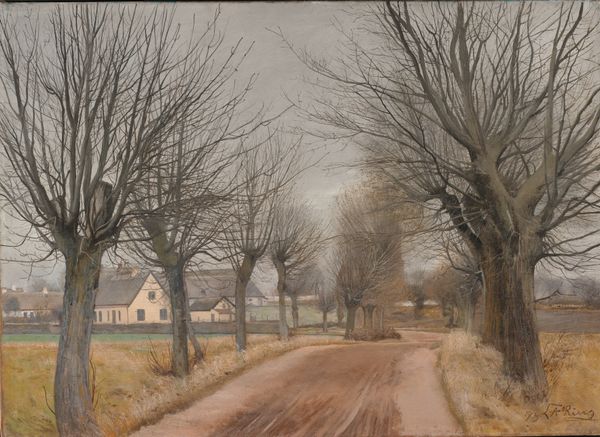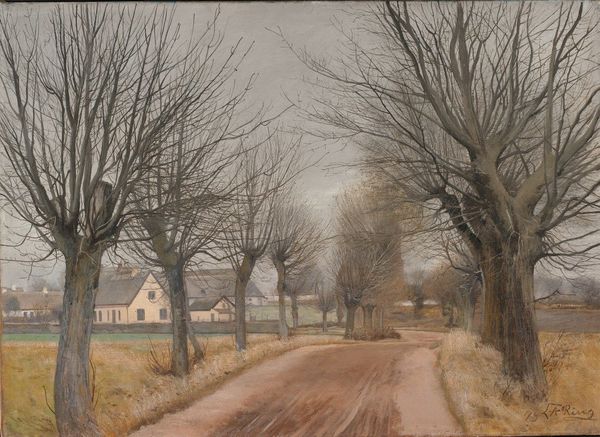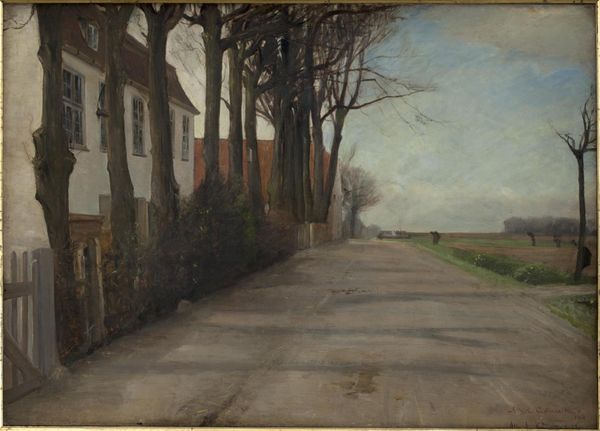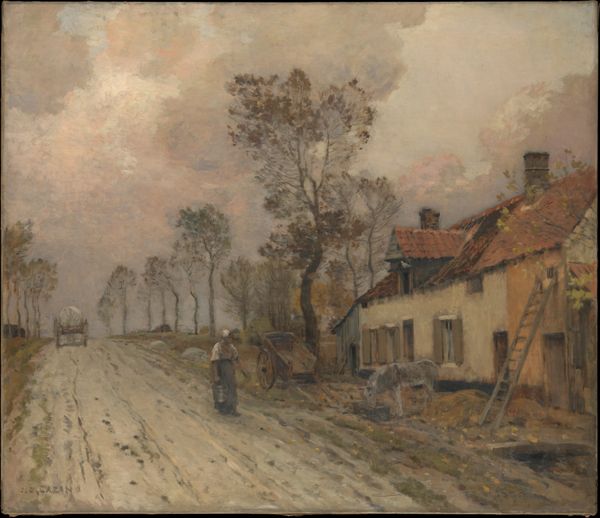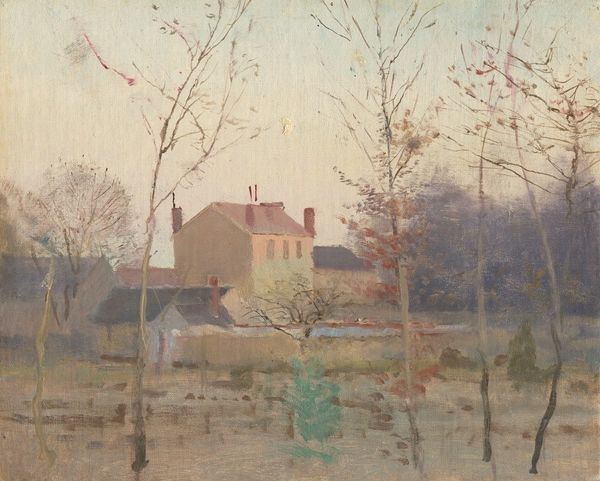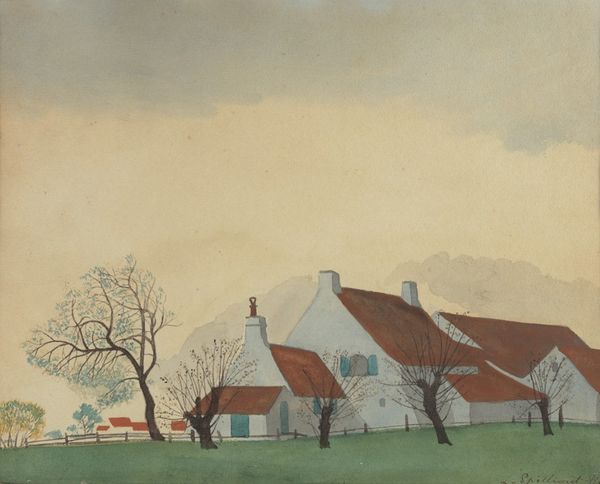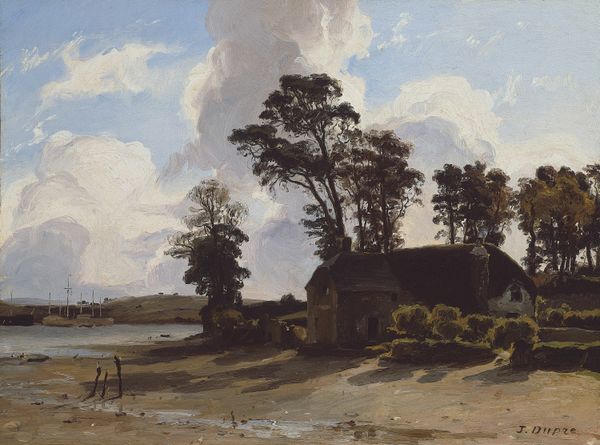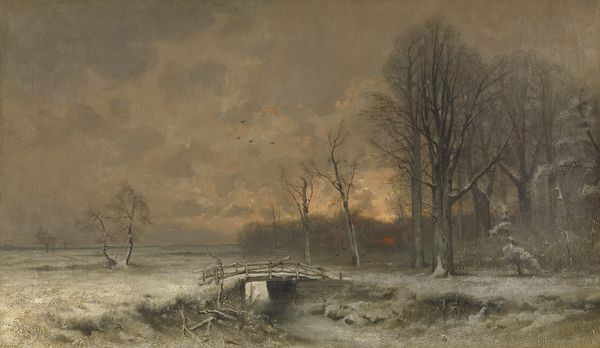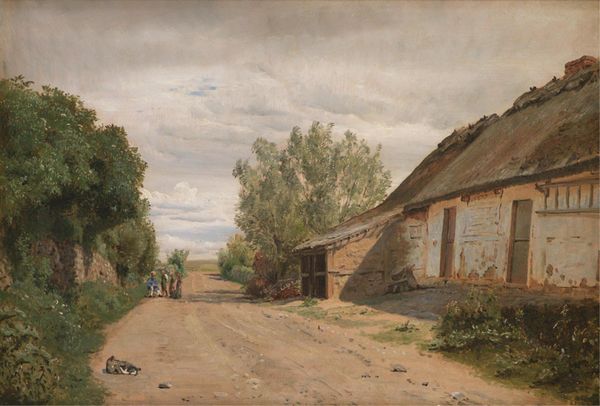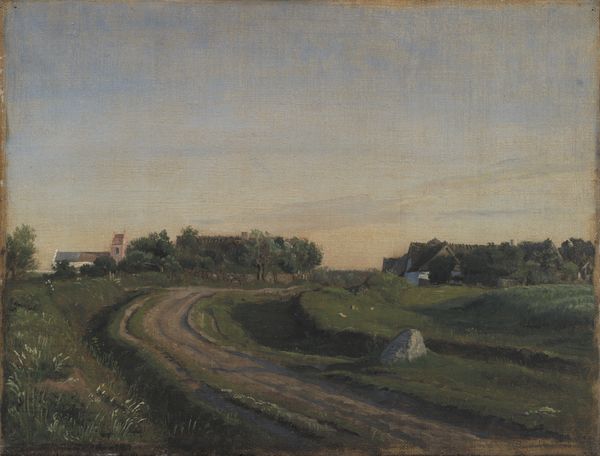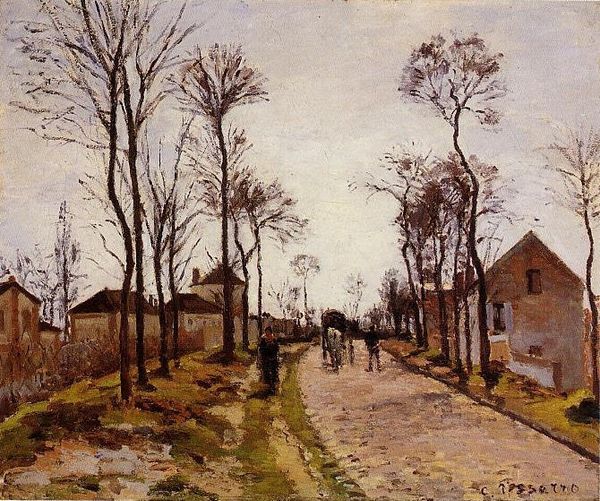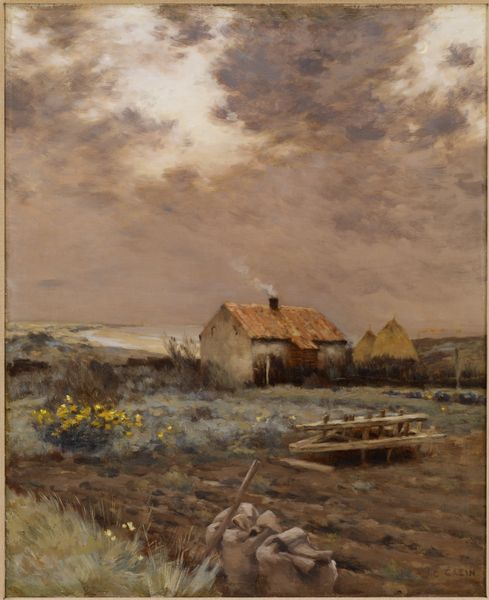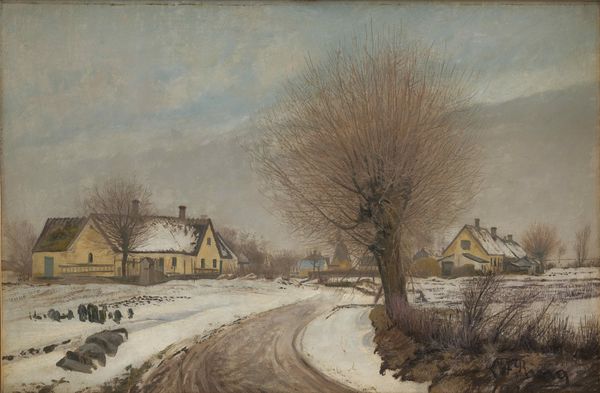
Dimensions: 27.5 cm (height) x 36.5 cm (width) (Netto)
Editor: This is "Evening after a Thaw. Taabæk, North of Copenhagen," painted in the 1850s by Vilhelm Kyhn. It’s an oil painting, and it strikes me as quite bleak, almost desolate. There's a real sense of stillness in the air. What do you see in this piece, considering its historical context? Curator: This work, rendered en plein air, aligns with the burgeoning national romanticism movement in Denmark at the time. Kyhn seeks to capture the essence of the Danish landscape, but it's not just pretty scenery. It’s deliberately unsentimental. The focus is not on heroic grandeur but rather a humble, almost melancholic, depiction of rural life. The thaw suggests change, the end of winter, but also perhaps a disruption of the established order. Editor: So the "thaw" isn't just about the weather; it’s symbolic? Curator: Precisely. Consider the mid-19th century, a period of social and political upheaval. Artists like Kyhn are implicitly questioning traditional values and depicting everyday scenes rather than idealized versions of reality, democratizing art by portraying accessible scenes from everyday life. This has strong ties to broader national identity and consciousness. How do you think its public reception influenced this type of work? Editor: It's fascinating to think that what appears to be just a landscape painting could be imbued with these layers of social commentary. It shifts my understanding completely! Curator: Indeed. It highlights how artistic choices are often shaped by the socio-political landscape, influencing artistic output and reflecting prevailing attitudes towards home and the wider world. Editor: This conversation truly broadened my perspective of how political landscapes impact an artist's vision. Curator: Mine, too! It is these intersections that help unlock a piece’s secrets.
Comments
No comments
Be the first to comment and join the conversation on the ultimate creative platform.
